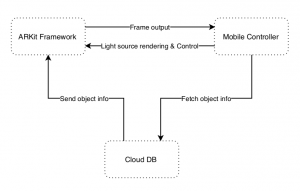Profiler:
1/ Real Time Face Detection
M. Sharif, K. Ayub, D. Sattar, M. Raza
Real Time Face Detection method by changing the RGB color space to HSB color space and try to detect the skin region. Then, try to detect the eye of the face in the region. The first step is face detection, second step is face verification. Time is crucial since it is real time. The published time is 2012.
http://sujo.usindh.edu.pk/index.php/SURJ/article/view/1553
https://www.researchgate.net/publication/257022696_Real_Time_Face_Detection
https://arxiv.org/abs/1503.03832
2/ FaceNet: A Unified Embedding for Face Recognition and Clustering:
A paper describing the method for face recognition using FaceNet system. FaceNet is a system by Google that allows high accuracy and speed in face detection mechanism. The accuracy of FaceNet system is 99.63% on the widely used Labeled Faces in the Wild (LFW) dataset.
Two Implementations of FaceNet for Face Recognition:
https://github.com/cmusatyalab/openface
https://github.com/davidsandberg/facenet
Virtual Space:
1/ Towards Massively Multi-User Augmented Reality on Handheld Devices
Develop a framework for implementing augmented reality interface on hand-held devices. There’s a graphical tool for developing graphical interfaces called PocketKnife, a software renderer called Klimt and a wrapper library that provides access to network sockets, threads and shared memory. In the end, they develop several AR games with the framework, such as the invisible train game.
Investor:
1/ Financial time series forecasting using support vector machines
Using support vector machine and compare the results with other methods of forecasting. The upper bound C and the gamma kernel parameter play an important role in the performance of SVMs. The prediction performance may be increased if the optimum parameters of SVM are selected.
C parameter is the parameter for how small will the hyperplane of largest minimum margin be.
